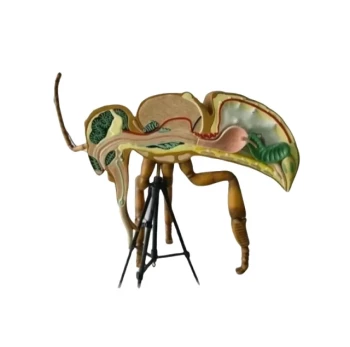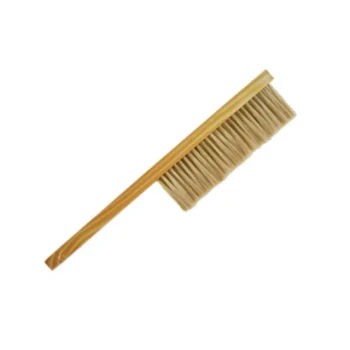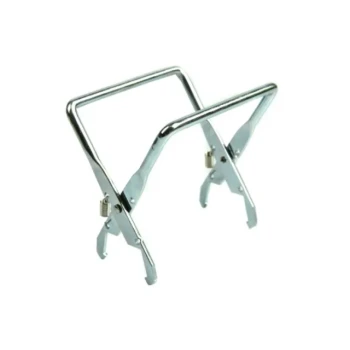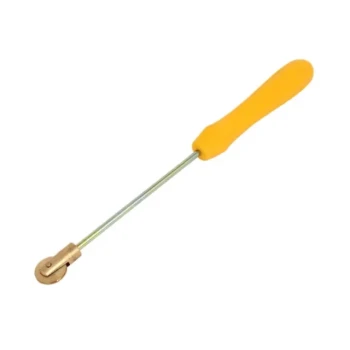To get bees to draw out new foundation, you must ensure there is a strong nectar flow, either from natural forage or by providing supplemental sugar syrup. Bees only produce the large amount of wax needed for comb building when they have a surplus of resources. For plastic foundation specifically, you can increase acceptance by coating it with a thin layer of melted beeswax or rubbing it with burr comb.
The single most important factor is understanding that bees do not build comb on command. They build comb as a biological response to abundance. Your primary job is to create or simulate an environment of resource surplus that triggers their natural instinct to expand.
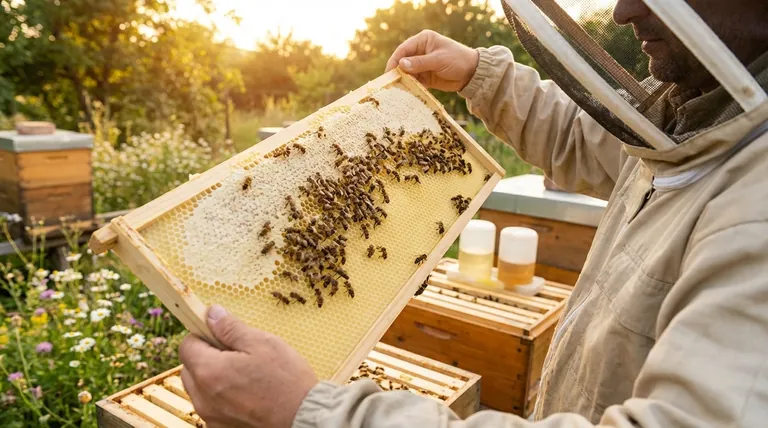
The Core Principle: A Strong Nectar Flow
The production of beeswax is an energy-intensive process for honeybees. They will only engage in large-scale comb construction when they have more incoming nectar than they need for their daily consumption and have a biological need for more storage space.
Why Nectar is Everything
A strong honey flow is the engine of all wax production. When nectar is plentiful, young worker bees consume large amounts of it, which activates the four pairs of wax glands on their abdomens to secrete small flakes of beeswax. Without this surplus of nectar, the wax glands remain dormant.
Simulating a Nectar Flow
If there is no natural nectar flow (a period known as a "dearth"), you can simulate one with supplemental feeding. A mixture of 1:1 sugar-to-water syrup fed continuously to the hive provides the carbohydrate energy necessary to stimulate the wax glands and fuel construction.
Optimizing the Hive Environment
Beyond the nectar flow, several other factors must be aligned for bees to commit resources to drawing new comb. A failure in any of these areas can halt progress.
The Importance of Colony Strength
A small or weak colony does not have the population of young bees required for large-scale wax production. They will prioritize survival, brood care, and foraging over expansion. A strong, populous colony is essential, as it has the necessary workforce to dedicate to building.
Timing is Critical
Bees have an annual cycle. Their strongest instinct to expand and build comb is in the spring and early summer as they prepare for the main honey flow and the population is growing. In late fall and winter, their focus shifts entirely to conservation and survival, and they will not draw new foundation.
Add a Scent of Home
Bees can be hesitant to work with foreign materials, especially new plastic foundation. You can significantly increase their acceptance rate by making it smell and feel more like their own work. Gently rubbing burr comb or painting on a thin layer of melted beeswax makes the new foundation far more attractive to them.
Understanding the Trade-offs
While stimulating comb drawing is beneficial, it's important to be aware of the potential downsides and common mistakes.
The Risk of Feeding
While effective, open feeding or a leaky feeder can attract bees from other hives, hornets, and wasps. This can initiate robbing, a scenario where invaders overwhelm your colony to steal its resources, which can be devastating to a weaker hive. Always use an internal feeder to minimize this risk.
The Cost of Pushing Weak Colonies
Trying to force a small or struggling colony to draw comb by feeding them heavily can be counterproductive. The bees may store the syrup in their existing brood nest, reducing the queen's laying space—a condition known as being syrup-bound. It is often better to wait for the colony to build strength naturally.
Patience is a Prerequisite
Even under ideal conditions, bees work at their own pace. A strong hive might draw out a full frame in a few days during a heavy flow, while a smaller one might take weeks. Do not be discouraged by slow progress; focus on ensuring the core conditions are met.
Making the Right Choice for Your Goal
Your strategy should adapt based on your specific conditions and the time of year.
- If your primary focus is leveraging a natural honey flow: Ensure your colony is strong and add new frames of foundation to the brood box to give them ample space to expand into.
- If your primary focus is expansion during a nectar dearth: Provide a continuous supply of 1:1 sugar syrup using an internal feeder to stimulate wax production.
- If your primary focus is getting bees to accept plastic foundation: Always apply a thin, even coat of melted beeswax to the plastic before placing it in the hive.
Ultimately, successful comb drawing comes from working in harmony with your bees' natural instincts, not against them.
Summary Table:
| Key Factor | Why It Matters | Key Action |
|---|---|---|
| Strong Nectar Flow | Fuels the energy-intensive wax production process. | Provide 1:1 sugar syrup during a dearth. |
| Colony Strength | A large population of young bees is needed to produce wax. | Only strong colonies should be encouraged to build. |
| Proper Timing | Bees are most inclined to build in spring and early summer. | Add foundation during peak expansion periods. |
| Foundation Prep | Increases acceptance, especially for plastic foundation. | Coat with a thin layer of melted beeswax. |
Ready to equip your apiary for success? Drawing comb efficiently requires the right tools and knowledge. HONESTBEE supplies commercial apiaries and beekeeping equipment distributors with high-quality, durable beekeeping supplies and equipment through our wholesale-focused operations. From durable foundations to reliable feeders, we provide the tools that help your colonies thrive. Contact our expert team today to discuss your wholesale needs and learn how we can support your beekeeping operations.
Visual Guide
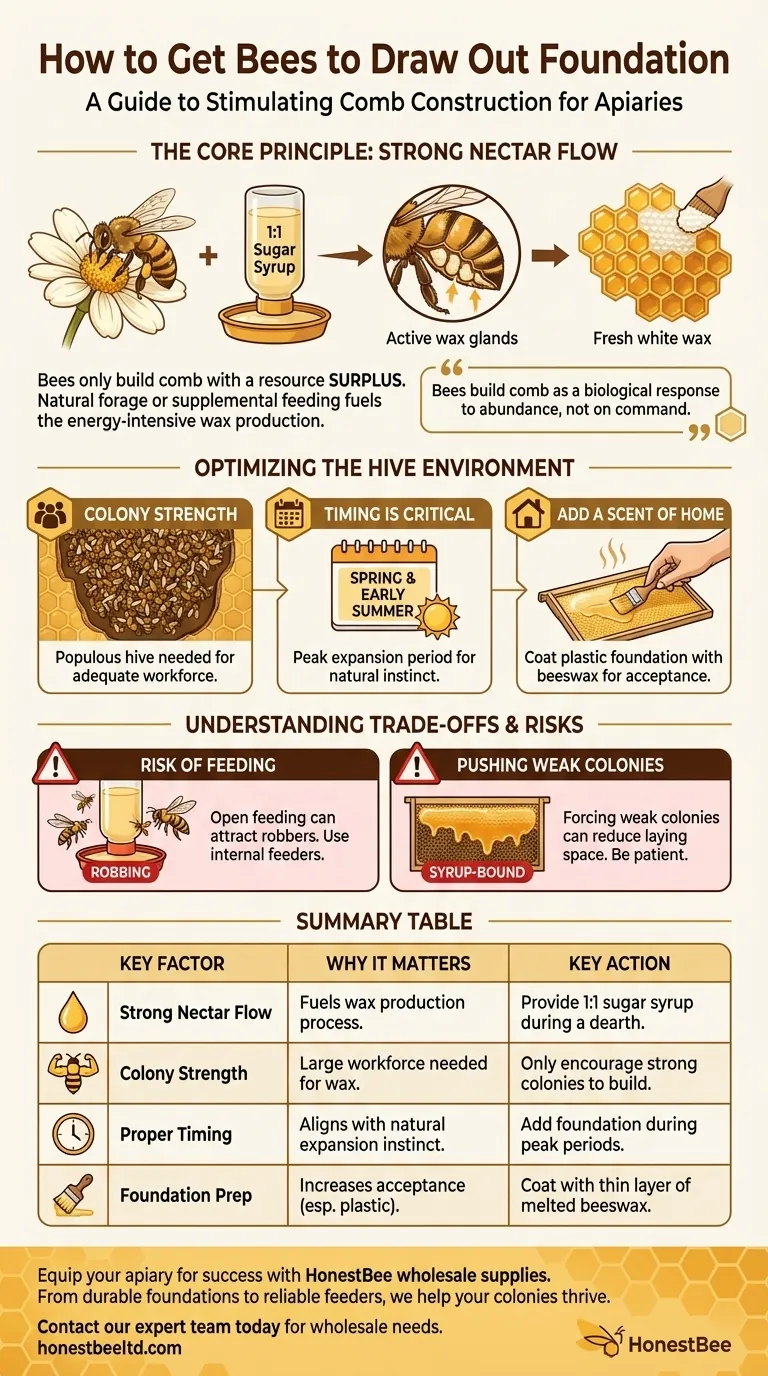
Related Products
- Manual Beeswax Comb Foundation Machine Wax Foundation Mill Embossing Machine
- Food Grade Plastic bee Foundation for Bee Frames
- Beeswax Foundation Sheets Beehive Foundation for Wholesale
- Colorful Silicone Beeswax Foundation Mold Mould for Beekeeping
- Professional Frame Preparation: The HONESTBEE Electric Wire Embedder
People Also Ask
- What is a comb foundation mill? A Strategic Tool for Stronger, More Productive Hives
- What is the importance of soaping the rollers during milling? Prevent Wax Adhesion & Equipment Downtime
- How should stuck wax on mill rollers be removed? A Gentle, Non-Damaging Cleaning Method
- What are the different uses of comb in a bee hive? A Guide to the Hive's Essential Architecture
- What is the use of a comb foundation mill? Boost Honey Production with Strategic Hive Control













